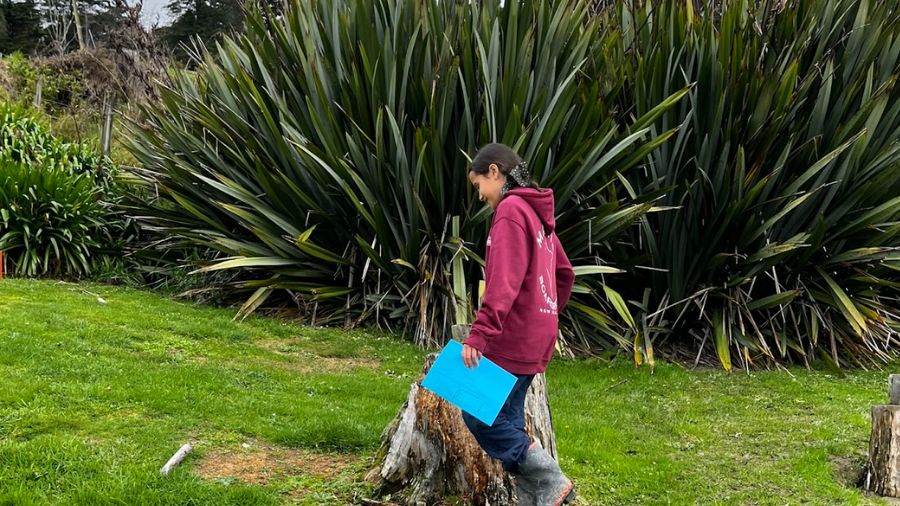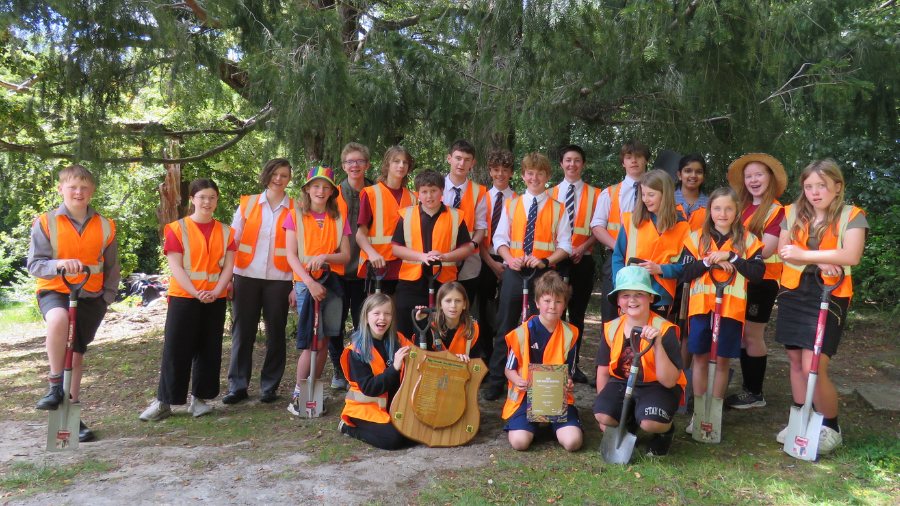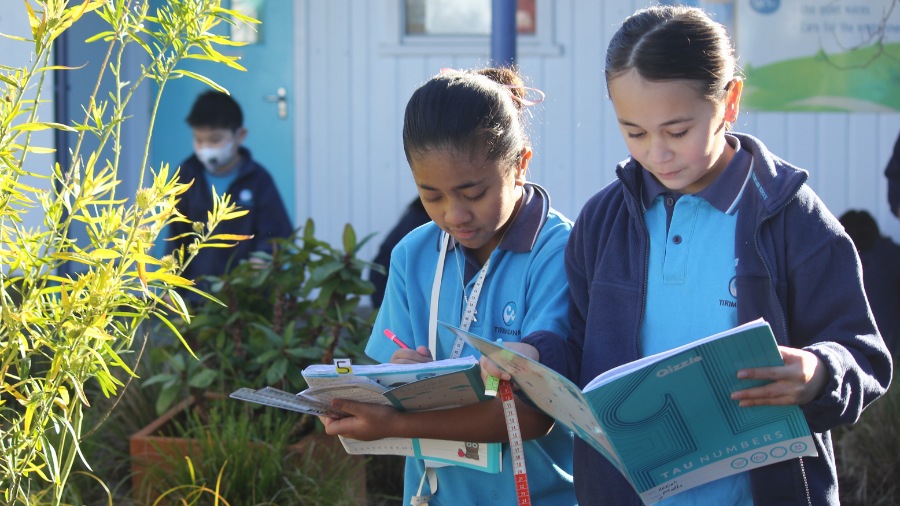This Spotlight has been written in collaboration with Technology Education New Zealand and focuses on Technology learning within the NZ Curriculum. You may also like to read the article Hangarau: Sustainable Relational Practice which supports kaikao with Te Marautanga o Aotearoa.
Technology learning and environmental education share many similarities, including the importance of creativity, empathy, consideration of diverse perspectives, hands-on learning and solving problems that are relevant to people and places. They both foster the development of skills that can be used across multiple learning areas.
This Spotlight shares ideas and resources from the Technology learning area and refreshed NCEA Level 1 courses that focus on environmental and sustainability contexts. We also share resources and support available for kaiako teaching Technology at all levels, by inviting Technology Education New Zealand (TENZ) to tell us more about their important mahi.
Kaua e rangiruatia te hāpai o te hoe;
e kore tō tātou waka e ū ki uta.
Do not lift the paddle out of unison;
our canoe will never reach the shore.
The Technology learning area whakataukī tells the story of ākonga within Technology embarking on a shared journey, collaborating with others in harmony to achieve a goal.
Technology Curriculum
This short section is an overview of the Technology curriculum for environmental educators, to help show the links with learning for sustainability. Experienced teachers can skip straight to the next section!
With a recent update in 2019, the Technology learning area has three overarching strands: Technological Practice, Technological Knowledge, and Nature of Technology.
These three strands are embedded within each of five technological areas:
- Computational thinking for digital technologies
- Designing and developing digital outcomes
- Designing and developing materials outcomes
- Designing and developing processed outcomes
- Design and visual communication
At the secondary level these split into the following subjects: Digital Technologies, Design & Visual Communication, Materials & Processing Technology. We explore these in more detail later in this article.
Note: The icons below originated from the inaugural Hangarau curriculum in 1999, which has a different structure and different philosophical underpinnings to the Technology curriculum in the New Zealand Curriculum framework for English-medium schools. This will be explored in a future Spotlight article.

Technological Practice
Design and develop sustainable, socially acceptable, and fit for purpose outcomes. Investigate issues and existing outcomes and learn to consider ethics, legal requirements, protocols, codes of practice, and the needs of and potential impacts on stakeholders and the environment.

Technological Knowledge
Understanding of material properties, uses, and development, along with systems, is essential to understanding how and why products work the way they do. For example, when designing a new school playground, students will explore where timbers, metals, and plastics are used.

Nature of Technology
Critique the impact of technology on societies and the environment and explore how developments and outcomes are valued by different people in different times. Increase understanding of complex moral and ethical aspects that surround technology and technological developments.
Students ask big questions such as “If it can be done, should it be done?”

Authentic Contexts: Real World Issues
All strands of Technology place an emphasis on providing authentic contexts for learning that are grounded in local places and relevant to all ākonga. This includes connecting with local iwi and hapū and understanding opportunities for reciprocal collaborations.
Most of the recent Technology resources and case studies on Tāhūrangi are connected to place-based and environmental learning, with many having a strong focus on mātauranga Māori. Schools who are part of the Enviroschools programme are also integrating Technology learning within local, sustainable contexts. Below is a selection of stories and case studies to help you get inspired.
“We want to use all our technology skills and knowledge to solve problems and help combat climate change. We want to learn more about living sustainably [and, as] importantly we want to make sure the technology centre is a sustainable environment.”
- Skyla, Jack and Cory, Raumati Technology Centre students
Raumati Technology Centre (Years 6 - 8) Students from 10 local primary schools flow through Raumati Technology Centre as part of their technology education. The centre has five main programmes: Foods, Hard Materials, Textiles, Digital Discovery and STEAM. Sustainability has been threaded through their programmes for many years. Click on the title to read the full Enviroschools story.

Protecting Kororā Penguins (Years 4 - 6) Enviroschools story about senior students at Nelson Central School, with technology projects including nesting boxes and signage.
Looking after Bees (Yr 7 - 8) This case study shows how a year 7 class developed their interest in bees into a wide-ranging, cross-curricular study developing outcomes to protect bees, such as bug hotels, bee-friendly gardens and seed bombs.
A Self-Watering Plant System (Yr 7 - 8) Students at Northcross Intermediate designed and created a plant-monitoring and self-watering system to keep the school’s indoor plants healthy during the school holidays, incorporating digital technology and design.

Light Festival: Reusing & Recycling Plastics (Yr 6 - 10)
The Queenstown LUMA light festival provides an authentic local context for primary and secondary technology students, creating jellyfish out of upcycled plastic.
Sustainable Products through Textiles (Yr 11 - 12) Enviroschools story about Whanganui Girls’ College students designing and producing food, cosmetic and menstrual products using natural materials and reusable packaging.
Manufacturing Predator Traps (Year 12) This resource illustrates how senior students at Wakatipu High School manufactured predator traps for Predator Free NZ as part of their hard materials programme.
Monitoring at Orokonui Ecosanctuary (Year 13) A senior student develops a monitoring system that sounds an alert when a gate has been left open at the Orokonui Ecosanctuary's kiwi chick enclosure.
Kawakawa Leaf Extract (Year 13) A case study of student practice, demonstrating the value of community connections and interactions between technology and science. Includes links to Rongoā Māori and Biotechnology, linking with senior Biology and Chemistry.
TENZ have produced a resource to support teachers with soap making, including an exploration of natural materials such as kawakawa, which you can purchase in their Resource Store.
Secondary Education: NCEA Resources
This section summarises some key aspects of the updated NCEA Level 1 Technology subjects, including links to resource materials for teachers and educators, for relevant environmental contexts.
Materials and Processing Technology
At Level 1 this subject can include food technology, textiles, hard materials, and electronics.
The Big Ideas include:
Design empathy leads to Materials and Processing Technology outcomes that enhance people’s lives.
“Consider impacts on people by considering the mātauranga Māori principles of kotahitanga, whanaungatanga, manaakitanga, and kaitiakitanga.”
Sustainability underpins intervention by design; Sustainability in Materials and Processing Technology draws from and is guided by kaitiakitanga.
“Developing an understanding of sustainable practices should be derived from the responsibility we all have towards Aotearoa New Zealand, and as global citizens.”
TENZ have produced a resource about designing & making sustainable jewellery from repurposed materials including cutlery, glass and ceramics, which is outlined in the next section and you can access from their Resource Store.

Design and Visual Communication
In order to create purposeful and future-focused design ideas, ākonga must be willing to experiment, develop, respond to feedback, and reflect on their design thinking. It will help them to build a sense of ethical responsibility to the peoples and places they are designing for.
“Designers are responsive to the ethical, environmental, and cultural impacts they may have.”
Big Idea: Design, as an act of manaakitanga, seeks new ways to improve the lives of people and their places. Designers respond to social, cultural, and environmental contexts, producing outcomes that improve people's lives. They consider forms of knowledge from multiple perspectives that speak to the people and places of the design ideas and outcomes. This includes ethics, sustainability, and inclusion.
Digital Technologies
Big Idea: The discipline of Digital Technologies embodies whanaungatanga. Outcomes are made by people, for people, within cultural, social, and environmental contexts
Digital Technologies 1.2 Develop a digital technologies outcome
Assessment activity: Kaitiakitanga - Develop a digital technologies outcome that will reflect or promote kaitiakitanga. Example outcomes could be: pest control solution; water quality management system or tool; game which promotes sustainable practice; physical creation (developed digitally) that promotes kaitiakitanga or an environmental advisory webpage.
TENZ: Teaching Resources and Support
Technology Education New Zealand (TENZ) is a non-profit professional association supporting and promoting all levels and areas of technology education in Aotearoa New Zealand. TENZ operates on a foundation of values that reflect the essence of the organisation and its commitment to the education sector in New Zealand. These values, which include Auahatanga, Whakawhanaungatanga, Rangatiratanga, Ako, Kaitiakitanga, and Mahi tahi, form the basis of TENZ's inclusive approach.

TENZ have created many educational teaching resources that weave consideration for the environment and utilise a sustainable approach to product design. To access information on the website you can create a free membership account which allows you to login and access resources at no cost or for a small price.
In the TENZ Resource Store | Pataka rauemi, available once you have signed in using your free member login, you will find a selection of resources including:
Sustainable Lunches kit which introduces the issue of litter as a context for learning and takes students on a journey to develop solutions to this problem.
Repurposed Materials: Brendon Jaine Jewellery Design have produced a resource about designing & making sustainable jewellery from repurposed materials including cutlery, glass and ceramics. This resource includes student activities and information for teachers.
Design Projects and Competitions
TENZ is committed to helping students create a better future. We run regular design competitions that highlight the need for sustainable design and building links with our local communities and we also support many national competitions that raise awareness of design for the environment.

For our design projects inspired by nature we have worked with the educators at Kiwi Conservation Club. In 2024 we collaborated with KCC to create the Fungal Lunch competition, which you can still access on their website here. Previous years have also included cake and stamp design projects.
Another example is the annual Samsung Solve for Tomorrow competition where students discover authentic needs in their communities, throughout Aotearoa and ultimately across the globe. They work through a design process and/or undertake scientific investigations to improve our society.
TENZ also supports initiatives that encourage design and creativity linked to the reuse and repurposing of materials and products. In 2024, TENZ sponsored materials for the education program for LUMA, a light & sculpture showcase held in Queenstown and we have sponsored the development of resources for the Happy Phones initiative, developed by Geoff Bentley.
Teacher Professional Learning
Once a month TENZ provides free Wednesday Webinars for all teachers, on many environmentally themed topics and with a diverse range of guests including:

Unleashing Creativity with Natural Resources - Celia Hogan, Feb 2024
Bring the Ocean to the Classroom with Virtual Reality - BLAKE NZ, Jan 2024
Litter Intelligence Education Programme
- Ben Knight from Sustainable Coastlines, Nov 2023
DIY Repurposed Phones - Geoff Bentley, TechLeap, April 2024
Garden to Table - Victoria Bernard, March 2023
Introduction to Rāranga - Sonia Lucchese from BetSo Weaving, May 2023
Sustainable Lunches project - Sarah Washbrooke, 2021
Introduction to Hydroponics - Kerry Lee, August 2022
Visit the TENZ Events page to find information about upcoming webinars.
Mātauranga Māori
TENZ is committed to encouraging exploration of and weaving Te Ao Māori and mātauranga Māori into learning, especially from a kaitiakitanga perspective. We have supported many forms of professional learning that enriches all ākonga including interactive and inspirational face to face workshops, and informative webinars, such as Introduction to Rāranga - Sonia Lucchese and Kakahuria ki Te Atawhai - Clothed in kindness and Kōrero Korowai by Nan Walden and Amy MaCaskill.
In-Person Teacher PLD
We provide extensive professional learning opportunities for kaiako, with recent examples including equity-centred design thinking PLD days, supported by MindSpark USA, focusing on contexts and issues relating to the environment, sustainability and people. Another example was learning about the impact of bees and beekeeping in our local communities with a group of tertiary educators visiting a local bee product producer.

Related Stories and Resources
Here is a selection of quick links and related NZAEE Spotlights for you to explore further.
Hangarau: Sustainable Relational Practice (Te Marautanga o Aotearoa)
Empowered Students Share Stormwater Designs
Eco-Building: Muddy Feet and Creative Minds
Garden to Table - Taster Resources (Yrs 1 - 8)
Genesis Energy: School-Gen Resources (Yrs 1 - 12)
Acknowledgements
Many thanks to Sarah Washbrooke and Hamish Johnston from TENZ for providing an overview of their work to support the Technology learning area.
All images in this article were used with permission and provided by TENZ or NZAEE.
Note: Te Mātaiaho | refreshed NZ Curriculum draft for the Technology learning area was scheduled to be released for consultation in late 2023 but that process has been delayed while a review of the curriculum refresh takes place. For this reason, we have referred to examples from the existing NZC Technology curriculum, but have also referred to updated wording from the NCEA Education website for the new Level 1 Technology subjects.






